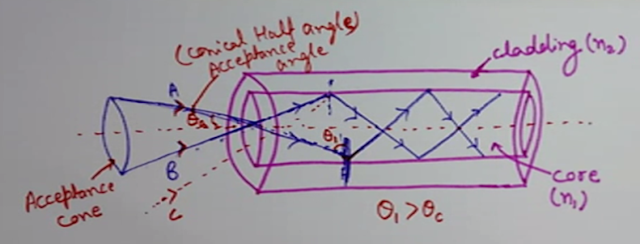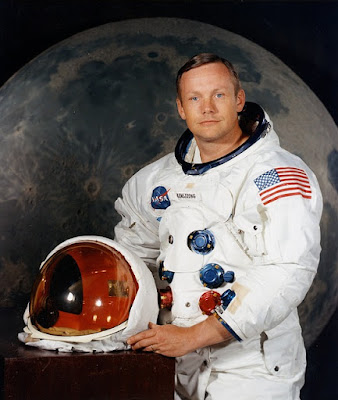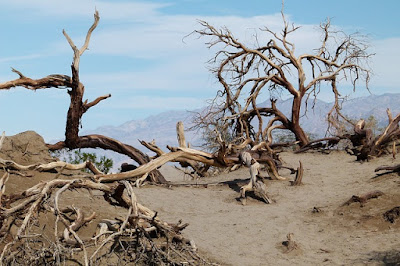In this post we will discuss two important concepts of optical fibers, these are- Acceptance Angle and Numerical Aperture (NA).
🌓READ THIS ALSO:-
Optical Fiber Communication (Complete)
Now let's understand this concept with the help of this diagram-
This diagram clearly illustrates the concept of the numerical aperture and acceptance angle. What we mean by Acceptance cone, is also explain here.
Although other protective layers are also there over the cladding layer, But only core and cladding are shown in this image, which is enough to clear the concepts.
🌓READ THIS ALSO:-
STEP INDEX OPTICAL FIBER (MULTIMODE AND SINGLE MODE STEP INDEX FIBERS)
OPTICAL FIBER SOURCES (DESIRABLE PROPERTIES)
The refractive index (the ratio of speed of light in vacuum and the speed of light in the medium) of the core is more than the refractive index of the cladding.
As we also know that, when a light ray propagates from a denser medium to the rarer medium, it deviates away from the normal. But when the angle of incidence is more than the critical angle then this light ray returns back into the same medium. This phenomena is called as the 'Total Internal Reflection' (TIR).
Although it is a special case of refraction where the incidence angle is more than the critical angle, but here it seems like a reflection phenomena and the light ray is totally reflected back into the same medium. Therefore this phenomena is known as the Total Internal Reflection (TIR).
🌓READ THIS ALSO:-
OPTICAL FIBER: STRUCTURE AND WORKING PRINCIPLE
The same phenomena of total internal reflection takes place in the optical fibre. Here the core acts as a denser medium while the cladding as a rarer medium. So the light rays propagate inside the core of the optical fiber with the total internal reflections.
But as we have already discussed that for the total internal reflection to take place, it is required that the incidence angle must be more than the critical angle. If this condition is satisfied then the light ray can propagate inside the core of The optical fiber with total internal reflection.
🌓READ THIS ALSO:-
ADVANTAGES OF OPTICAL FIBER COMMUNICATION
Single-Mode Optical Fiber Advantages
Now again observe the image. This image shows two light rays. Focus on any one light ray. You will see that total internal reflection takes place inside the core every time at the core cladding interface. The reflected ray after total internal reflection acts as the incident ray for the next total internal reflection. As each time the incidence angle is more than the critical angle at the core cladding interface. Therefore the light ray propagates inside the core of The optical fibre with successive total internal reflections.
NOTE- For much better explanation, I suggest you to watch my video lecture given above on this page.
It means that if there is any light ray that is entering into the fiber with an angle which is outside this cone, then the total internal reflection will not take place. Because in this case the incidence angle will be smaller than the critical angle (Visualize this condition by observing the image or you may watch the video given here).
🌓READ THIS ALSO:-
Graded Index Fibers: Basics, Structure and Working
You can understand it easily with the help of this image also. According to this image, if the angle theta 1 reduces to a certain limit then this light ray goes out of the acceptance cone.
In other words we can say, if the light ray is out of the acceptance cone, then the incidence angle is smaller than the critical Angle and in this case total internal reflection will not take place.
Now you know the concept of acceptance cone. So it is very easy to understand, what is acceptance angle.
Acceptance angle is just the conical half angle of the acceptance cone. This acceptance angle is shown in the diagram here.
As already defined, "Acceptance angle is the maximum angle with the axis of the optical fiber at which light can enter the fiber, in order to be propagated through it".
The light rays that are outside this acceptance cone are not accepted by the optical fiber, that's why it is known as acceptance cone.
Let's now discuss what is Numerical Aperture...
The numerical aperture provides important relationship between acceptance angle and the refractive index of the core and cladding.
These relationships are given here in the image below-
Definition of Acceptance Angle
Acceptance angle is the maximum angle with the axis of the Optical Fiber at which the light can enter into the optical fiber in order to be propagated through it.🌓READ THIS ALSO:-
Optical Fiber Communication (Complete)
Now let's understand this concept with the help of this diagram-
 |
| Acceptance Angle and Numerical Aperture (NA) in Optical Fiber |
This diagram clearly illustrates the concept of the numerical aperture and acceptance angle. What we mean by Acceptance cone, is also explain here.
Watch the Complete Video Here
Structure and Working of the Optical Fiber
Now observe this diagram carefully, two layers of the Optical Fiber- Core and Cladding can be seen in the diagram. These are drawn in pink color. The light rays propagate inside the core that has another layer over it, known as cladding.Although other protective layers are also there over the cladding layer, But only core and cladding are shown in this image, which is enough to clear the concepts.
🌓READ THIS ALSO:-
STEP INDEX OPTICAL FIBER (MULTIMODE AND SINGLE MODE STEP INDEX FIBERS)
OPTICAL FIBER SOURCES (DESIRABLE PROPERTIES)
The refractive index (the ratio of speed of light in vacuum and the speed of light in the medium) of the core is more than the refractive index of the cladding.
As we also know that, when a light ray propagates from a denser medium to the rarer medium, it deviates away from the normal. But when the angle of incidence is more than the critical angle then this light ray returns back into the same medium. This phenomena is called as the 'Total Internal Reflection' (TIR).
Although it is a special case of refraction where the incidence angle is more than the critical angle, but here it seems like a reflection phenomena and the light ray is totally reflected back into the same medium. Therefore this phenomena is known as the Total Internal Reflection (TIR).
🌓READ THIS ALSO:-
OPTICAL FIBER: STRUCTURE AND WORKING PRINCIPLE
The same phenomena of total internal reflection takes place in the optical fibre. Here the core acts as a denser medium while the cladding as a rarer medium. So the light rays propagate inside the core of the optical fiber with the total internal reflections.
But as we have already discussed that for the total internal reflection to take place, it is required that the incidence angle must be more than the critical angle. If this condition is satisfied then the light ray can propagate inside the core of The optical fiber with total internal reflection.
🌓READ THIS ALSO:-
ADVANTAGES OF OPTICAL FIBER COMMUNICATION
Single-Mode Optical Fiber Advantages
Now again observe the image. This image shows two light rays. Focus on any one light ray. You will see that total internal reflection takes place inside the core every time at the core cladding interface. The reflected ray after total internal reflection acts as the incident ray for the next total internal reflection. As each time the incidence angle is more than the critical angle at the core cladding interface. Therefore the light ray propagates inside the core of The optical fibre with successive total internal reflections.
NOTE- For much better explanation, I suggest you to watch my video lecture given above on this page.
Acceptance Angle and Acceptance Cone
Now first we will understand the concept of acceptance cone. You can see this acceptance cone in the image given above. For the total internal reflection to take place, it is required that the light rays entering into the fibre must be confined to this cone.It means that if there is any light ray that is entering into the fiber with an angle which is outside this cone, then the total internal reflection will not take place. Because in this case the incidence angle will be smaller than the critical angle (Visualize this condition by observing the image or you may watch the video given here).
🌓READ THIS ALSO:-
Graded Index Fibers: Basics, Structure and Working
You can understand it easily with the help of this image also. According to this image, if the angle theta 1 reduces to a certain limit then this light ray goes out of the acceptance cone.
In other words we can say, if the light ray is out of the acceptance cone, then the incidence angle is smaller than the critical Angle and in this case total internal reflection will not take place.
Now you know the concept of acceptance cone. So it is very easy to understand, what is acceptance angle.
Acceptance angle is just the conical half angle of the acceptance cone. This acceptance angle is shown in the diagram here.
As already defined, "Acceptance angle is the maximum angle with the axis of the optical fiber at which light can enter the fiber, in order to be propagated through it".
The light rays that are outside this acceptance cone are not accepted by the optical fiber, that's why it is known as acceptance cone.
Let's now discuss what is Numerical Aperture...
Numerical Aperture (NA)
Numerical aperture in case of optical fiber communication can be defined as- "The light gathering (collecting) capacity of an optical fibre".The numerical aperture provides important relationship between acceptance angle and the refractive index of the core and cladding.
These relationships are given here in the image below-
Formulas for Numerical Aperture (NA) and Acceptance Angle
 |
| Numerical Aperture and Acceptance Angle Formulas |
Read More-
Go To HOME Page
FREQUENCY SPECTRUM OF AMPLITUDE MODULATION (WAVEFORMS AND EQUATIONS DERIVATION)
AMPLITUDE MODULATION (TIME DOMAIN EQUATIONS AND WAVEFORMS)
ADVANTAGES AND DISADVANTAGES OF DIGITAL COMMUNICATION SYSTEM
ADVANTAGES OF OPTICAL FIBER COMMUNICATION
STEP INDEX OPTICAL FIBER (MULTIMODE AND SINGLE MODE STEP INDEX FIBERS)
PULSE MODULATION TECHNIQUES (PAM, PWM, PPM, PCM)
OPTICAL FIBER: STRUCTURE AND WORKING PRINCIPLE
PULSE AMPLITUDE MODULATION (PAM)
COMPARISON OF PAM, PWM, PPM MODULATION TECHNIQUES
PULSE WIDTH MODULATION (PWM)
CONTINUOUS TIME AND DISCRETE TIME SIGNALS (C.T. AND D.T. SIGNALS)
NEED AND BENEFITS OF MODULATION
PULSE POSITION MODULATION (PPM)
OPTICAL FIBERS IN COMMUNICATION: COVERS ALL IMPORTANT POINTS
OPTICAL FIBER SOURCES (DESIRABLE PROPERTIES)
AMPLITUDE MODULATION Vs FREQUENCY MODULATION (ADVANTAGES AND DISADVANTAGES)
PULSE CODE MODULATION (PCM) [ADVANTAGES AND DISADVANTAGES]
SAMPLING THEOREM AND RECONSTRUCTION (SAMPLING AND QUANTIZATION)
SUPERPOSITION THEOREM (BASICS, SOLVED PROBLEMS, APPLICATIONS AND LIMITATIONS)
Digital Modulation Techniques (ASK, FSK, PSK, BPSK)/ Amplitude, Frequency and Phase Shift Keying
Conventional AM Vs DSB-SC Vs SSB-SC Vs VSB (Comparison of AM Systems)
Quadrature Amplitude Modulation (QAM)/ QAM Transmitter and QAM Receiver Block Diagram
Single-Mode Optical Fiber Advantages
What are Microwaves and their Applications (Uses) in various fields
Microwaves Properties and Advantages (Benefits)
Basic Structure of Bipolar Junction Transistor (BJT) - BJT Transistor - Working and Properties
Polar Plots of Transfer Functions in Control Systems (How to Draw Nyquist Plot Examples)
Generation of Binary Phase Shift Keying (BPSK Generation) - Block Diagram of Binary Phase Shift Keying (BPSK)
Low Level and High Level Modulation Block Diagram (AM Transmitter Block Diagram)
Block Diagram of CRO (Cathode Ray Oscilloscope), Components of CRO and CRT with Structure and Working
Slope Overload Distortion and Granular (Idle Noise), Quantization Noise in Delta Modulation
Frequency Translation/Frequency Mixing/Frequency Conversion/Heterodyning (Basic Concepts and Need)
Quadrature Phase Shift Keying Modulation (QPSK) Basics, Waveform and Benefits
Pulse Code Modulation (PCM) Vs Differential Pulse Code Modulation (DPCM)
Go To HOME Page
FREQUENCY SPECTRUM OF AMPLITUDE MODULATION (WAVEFORMS AND EQUATIONS DERIVATION)
AMPLITUDE MODULATION (TIME DOMAIN EQUATIONS AND WAVEFORMS)
ADVANTAGES AND DISADVANTAGES OF DIGITAL COMMUNICATION SYSTEM
ADVANTAGES OF OPTICAL FIBER COMMUNICATION
STEP INDEX OPTICAL FIBER (MULTIMODE AND SINGLE MODE STEP INDEX FIBERS)
PULSE MODULATION TECHNIQUES (PAM, PWM, PPM, PCM)
OPTICAL FIBER: STRUCTURE AND WORKING PRINCIPLE
PULSE AMPLITUDE MODULATION (PAM)
COMPARISON OF PAM, PWM, PPM MODULATION TECHNIQUES
PULSE WIDTH MODULATION (PWM)
CONTINUOUS TIME AND DISCRETE TIME SIGNALS (C.T. AND D.T. SIGNALS)
NEED AND BENEFITS OF MODULATION
PULSE POSITION MODULATION (PPM)
OPTICAL FIBERS IN COMMUNICATION: COVERS ALL IMPORTANT POINTS
OPTICAL FIBER SOURCES (DESIRABLE PROPERTIES)
AMPLITUDE MODULATION Vs FREQUENCY MODULATION (ADVANTAGES AND DISADVANTAGES)
PULSE CODE MODULATION (PCM) [ADVANTAGES AND DISADVANTAGES]
SAMPLING THEOREM AND RECONSTRUCTION (SAMPLING AND QUANTIZATION)
SUPERPOSITION THEOREM (BASICS, SOLVED PROBLEMS, APPLICATIONS AND LIMITATIONS)
Digital Modulation Techniques (ASK, FSK, PSK, BPSK)/ Amplitude, Frequency and Phase Shift Keying
Conventional AM Vs DSB-SC Vs SSB-SC Vs VSB (Comparison of AM Systems)
Quadrature Amplitude Modulation (QAM)/ QAM Transmitter and QAM Receiver Block Diagram
Single-Mode Optical Fiber Advantages
What are Microwaves and their Applications (Uses) in various fields
Microwaves Properties and Advantages (Benefits)
Basic Structure of Bipolar Junction Transistor (BJT) - BJT Transistor - Working and Properties
Polar Plots of Transfer Functions in Control Systems (How to Draw Nyquist Plot Examples)
Generation of Binary Phase Shift Keying (BPSK Generation) - Block Diagram of Binary Phase Shift Keying (BPSK)
Low Level and High Level Modulation Block Diagram (AM Transmitter Block Diagram)
Block Diagram of CRO (Cathode Ray Oscilloscope), Components of CRO and CRT with Structure and Working
Slope Overload Distortion and Granular (Idle Noise), Quantization Noise in Delta Modulation
Frequency Translation/Frequency Mixing/Frequency Conversion/Heterodyning (Basic Concepts and Need)
Quadrature Phase Shift Keying Modulation (QPSK) Basics, Waveform and Benefits
Pulse Code Modulation (PCM) Vs Differential Pulse Code Modulation (DPCM)















